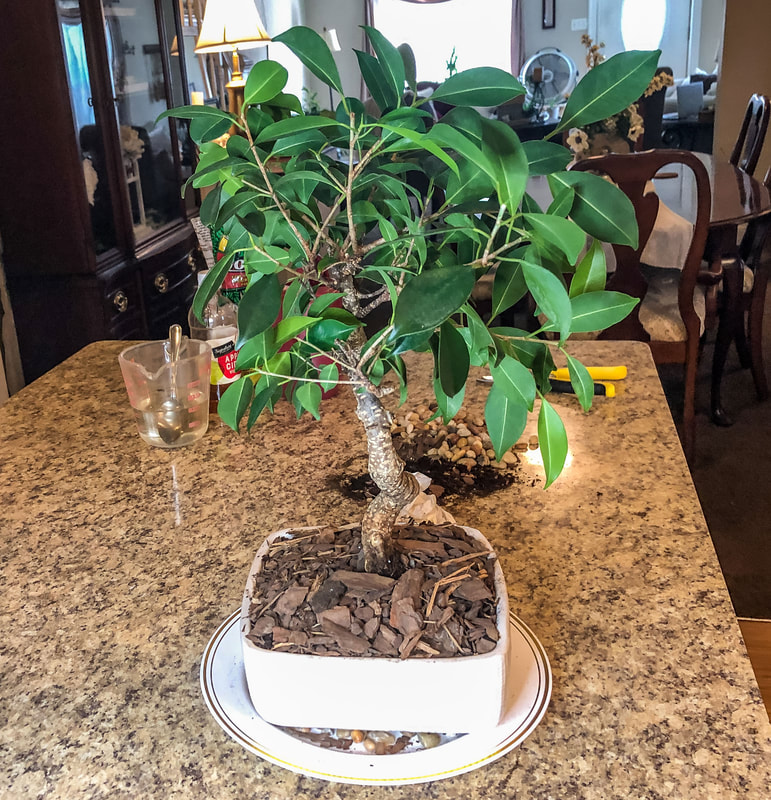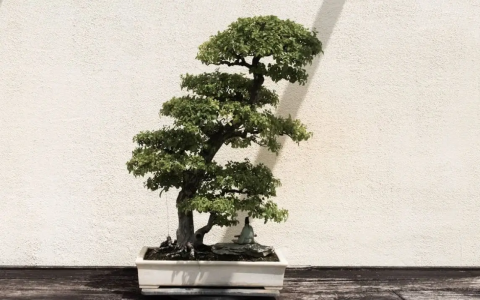Why Mess With Repotting?
Alright, so today was the day for my big Ficus Microcarpa. It’d been sitting in that same old pot looking kinda sad for almost two years. Leaves dropping more than usual, water just flooding straight through whenever I watered it, and honestly, it just looked… cramped. Like it was wearing jeans three sizes too small. Time to give it some legroom.
Gathering My Tools
First things first, I had to dig out my gear. You know how it is, stuff gets scattered everywhere.

- Found a slightly bigger pot I had stashed away – drainage holes? Check.
- Scrounged up some fresh bonsai soil mix (that gritty, chunky stuff, not garden dirt).
- Grabbed my root hook (looks like a bent fork, super handy).
- My trusty sharp pruning scissors, clean rag, mesh to cover the pot holes, and my watering can.
All set? Good. Now for the messy part.
Getting the Tree Out of Jail
This is always the nerve-wracking bit. Watered it well yesterday to soften things up. Carefully tipped the whole thing sideways. Gave the pot a few gentle but firm taps, you know? Thump, thump, thump. Wiggled it gently. Nothing. That root mass was packed tight! Patience… more wiggling, more coaxing. Finally, pop! It slid out, root ball still mostly holding the shape of the old pot. Whew.
Seeing What Was Really Going On Down There
Yikes. The bottom was just a tangled mat of roots. Circling around, thicker than my thumb in places. Imagine roots that forgot how to grow down, just kept running laps. Used my fingers first to gently tease out the old soil. Then, the root hook got busy in that bottom third, raking out decades-old compacted grit (okay, felt like decades). Got rid of maybe 20-25% of the old dirt.
Time for the shears. Carefully snipped off the thickest, fattest roots circling the bottom – the ones clearly just strangling everything. Cut back some of the longer, stringier roots too. Goal wasn’t to hack it to death, just give the finer roots breathing space to actually work.
The New Pad
Covered the new pot’s drainage holes with mesh to stop the soil washing out. Prepped it with a first little layer of that fresh, airy soil. Lowered the tree in, adjusting it a bit so it sat just right and wasn’t leaning. Then the fun part: started shoveling new soil mix in all around the roots with my fingers. Poked and teased the soil down into the root ball using chopsticks to get rid of any air pockets – vital! Left a little bit of the main root flare visible at the top, looks natural. Finally, gave it a really good soak until water ran clear out the bottom, settling the new soil in.
The Aftermath and Why It Matters
Honest moment? Repotting feels rough on the tree and the owner! It looked a bit shocked afterward, sure. But why put it through that?
- New soil = no compaction. Water can actually soak in and reach the roots instead of zipping past.
- Trimming those bully roots gives space for the good, feeder roots to grow and do their job grabbing water and food.
- Fresh nutrients in the soil mix? Yes please! The old stuff was basically exhausted.
- Drainage! No more drowning roots in stale, soggy mud.
Overlook this basic chore, and your tree slowly suffocates, starves, and drowns, all at once. The little signs – leaves yellowing, slow growth, water drainage issues – they add up to a cry for help. Doing the scary thing, getting my hands dirty, gives the tree years more healthy life. It’s not just about looks; it’s about survival. Takes effort, but trust me, your bonsai screams thank you later. Mine sure will.





















